Kawasaki History
Discovering Potential
“Providing innovative solutions to issues facing society.”
Kawasaki has continued to create new answers to meet the demands of the times, inheriting the spirit of our founder. Here, we introduce what we have achieved thus far, and how we will proceed forward.
0000
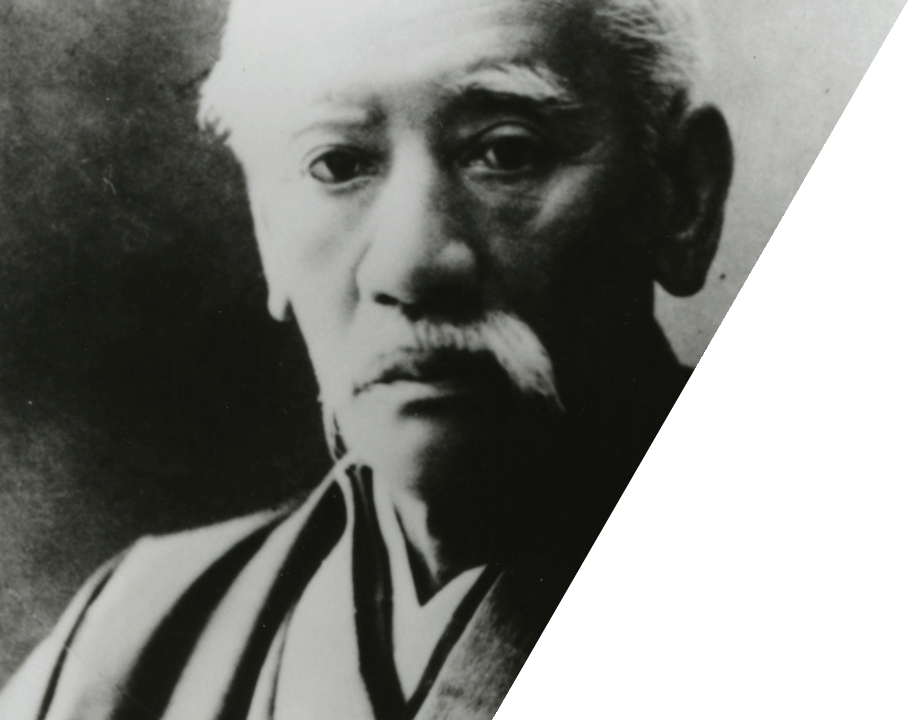
Q. What can we do to help Japan become modernized?
The Answer of Kawasaki
Shozo Kawasaki, the founder opens Kawasaki Tsukiji Shipyard (Tokyo)
Kawasaki’s origins go back to 1878, when Shozo Kawasaki established Kawasaki Tsukiji Shipyard in Tokyo. Eighteen years later, in 1896, it was incorporated as Kawasaki Dockyard Co., Ltd.
Born in Kagoshima to a kimono merchant, Shozo Kawasaki became a tradesman at the age of 17 in Nagasaki, the only place in Japan then open to the West. He started a shipping business in Osaka at 27, which failed when his cargo ship sank during a storm. In 1869, he joined a company handling sugar from Ryukyu (currently Okinawa Prefecture), established by a Kagoshima samurai, and in 1893, researched Ryukyu sugar and sea routes to Ryukyu at the request of the Ministry of Finance. In 1894, he was appointed executive vice president of Japan Mail Steam-Powered Shipping Company, and succeeded in opening a sea route to Ryukyu and transporting sugar to mainland Japan.
Having experienced many sea accidents in his life, Kawasaki deepened his trust in Western ships because they were more spacious, stable and faster than typical Japanese ships. At the same time, he became very interested in the modern shipbuilding industry. In April 1878, supported by Masayoshi Matsukata, the Vice Minister of Finance, who was from the same province as Kawasaki, he established Kawasaki Tsukiji Shipyard on borrowed land from the government alongside the Sumidagawa River, Tsukiji Minami-Iizaka-cho (currently Tsukiji 7-chome, Chuo-ku), Tokyo, a major step forward as a shipbuilder.
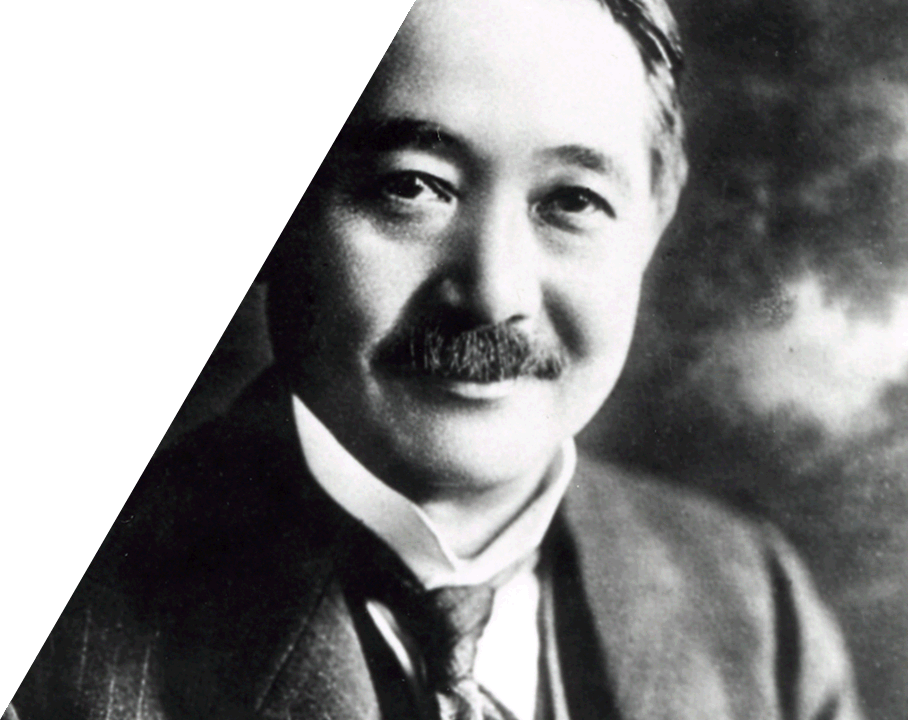
Q. How do we meet the rising demands of shipbuilding and repairs?
The Answer of Kawasaki
Kawasaki Dockyard Co., Ltd. is incorporated. Kojiro Matsukata is appointed as the first president of the new company
In 1894, seven years after the establishment of Kawasaki Dockyard, the Sino-Japanese War started and the shipbuilding industry in Japan enjoyed sudden prosperity. Kawasaki was also very busy in receiving and finishing a rush of orders for ship repairs. Realizing the limitation of private management, Kawasaki decided to take the Company public right after the end of the war. Then close to 60 years old, without a son old enough to succeed him, Kawasaki chose Kojiro Matsukata, the third son of his business benefactor, Masayoshi Matsukata, as his successor.
Kojiro Matsukata, born in Satsuma (currently Kagoshima Prefecture) in 1865, became a secretary to Japan's prime minister during his father's administration between 1891 and 1892. In 1896, the younger Matsukata was appointed the first president of Kawasaki Dockyard Co., Ltd., and maintained this position for 32 years until 1928. By expanding business into rolling stock, aircraft and shipping, and implementing Japan's first eight-hour day system and other measures, he nurtured and grew Kawasaki into a leading heavy industrial company in Japan.
Matsukata was also known as an art collector. The National Museum of Western Art in Tokyo was established around the core of Matsukata's private collection. In addition, the Tokyo National Museum houses his extensive collection of Ukiyoe prints.

Q. What are the major challenges for future business expansion?
The Answer of Kawasaki
Finishes construction on Dry Dock at Kobe Shipyard
Shozo Kawasaki had fully realized that the Company's shipyard needed a drastic increase in capacity since Kawasaki Dockyard was established in Kobe City, Hyogo Prefecture. He planned to construct a dry dock by reclaiming land next to the shipyard. In 1892, a land survey began, and in 1895, boring tests were carried out. After the incorporation of Kawasaki Dockyard, Kojiro Matsukata pursued the plan.
Construction work faced rough going due to the extremely weak foundations of the site on the Minatogawa River delta. After a couple of failures, a new technique was adopted to harden the underwater foundation by pouring concrete. Six years later in 1902, the dry dock was completed at last, costing three times as much and taking three times longer than the construction of a dock under normal conditions.
Size of the dry dock:
Length: 130 m, width: 15.7 m, depth: 5.5 m
Maximum size of ships that can be docked: 6,000 GT
The dry dock (currently No. 1 Dock, Kobe Shipyard) was listed as a Registered Tangible Cultural Asset of Japan in 1998.
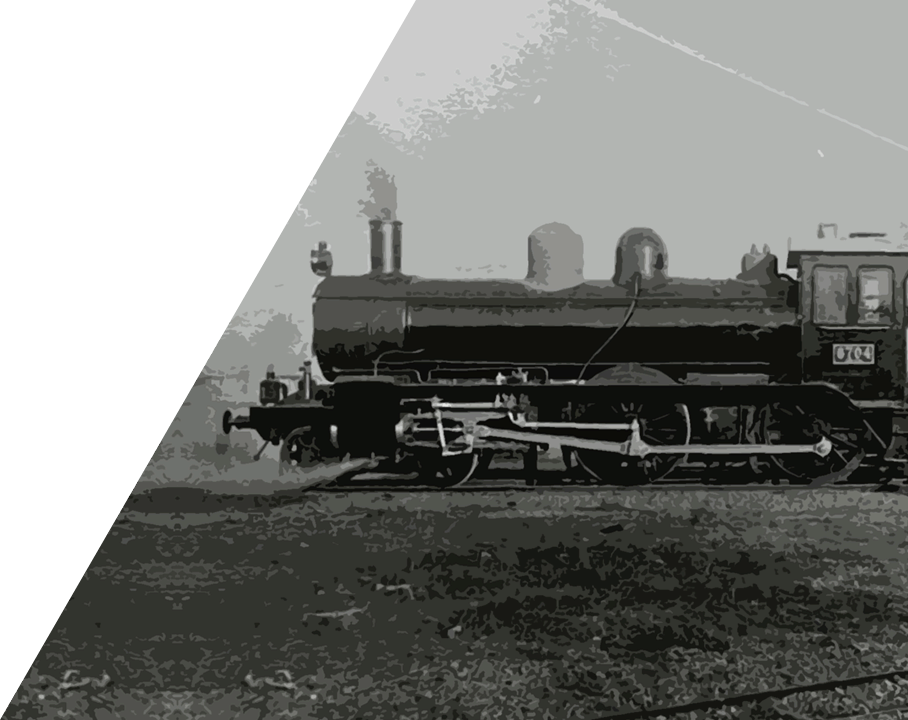
Q. What are the challenges in moving away from dependence on foreign countries for railway transport infrastructure?
The Answer of Kawasaki
Completes the first Kawasaki-made locomotive
In 1872, U.K.-made steam locomotives ran for the first time on Japan's first railway line between Shinagawa and Yokohama. Kawasaki started manufacturing rolling stock in 1907, and 4 years later produced its first steam locomotive, the Tender type locomotive (2B saturation steam type, No.6700-6704), for the Ministry of Railways. Its performance was highly acclaimed and the Ministry later praised the Company, saying that its locomotive had done even better than those made in foreign countries. Kawasaki manufactured 3,237 steam locomotives in total until 1971, greatly contributing to the development of railways in Japan.

Q. How could we create new means of transport in the sky of Japan?
The Answer of Kawasaki
Completes the first Kawasaki-made airplane
In 1922, Kawasaki completed its first airplane at its Hyogo works, and conducted test flights in Sohara Village (currently Kakamigahara City), Gifu Prefecture. The Japanese Army admitted its excellence based on the test flights, and adopted it for the first military plane, the Type Otsu 1 surveillance plane. Kawasaki manufactured about 300 planes of this type until 1927.
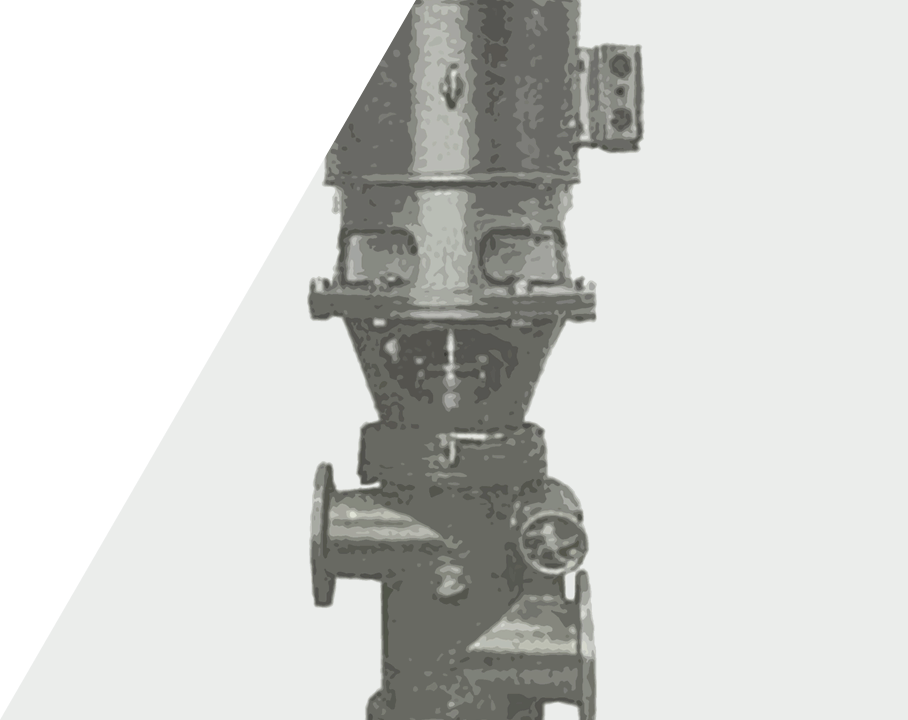
Q. How could we create a source of power that is both efficient and long-lasting?
The Answer of Kawasaki
Started producing and selling screw pumps
In 1936, Kawasaki with technological cooperation from Sweden’s IMO, began manufacturing screw pumps. This “KIMO Pump” was produced mainly as a lubricant pump and fuel oil pump. Until the end of World War II, lubricant pumps and fuel oil pumps were used for Kawasaki vessels.

Q. How could we make the human traffic that has become more active with modernization faster and more comfortable?
The Answer of Kawasaki
Series 0 Shinkansen electric train delivered to the Japanese National Railways
On April 13th 1964, the first Shinkansen by Kawasaki was delivered from the Hyogo factory to the Japanese National Torikai Rail Yards. The train was carried in a trailer on the national highway after midnight.
The trailer traveled at 7km/h, with police cars guiding the whole 6 hour journey from Kobe to Osaka.
Kawasaki’s trains were given the letter R for their set formation and official test runs began between the Torikai Rail Yard and Maibara. On October 1st of that year, the “Dream Super Express” Shinkansen made possible for travelers to get from Tokyo to Shin-Osaka in 4 hours (3 hours and 10 minutes the next year).
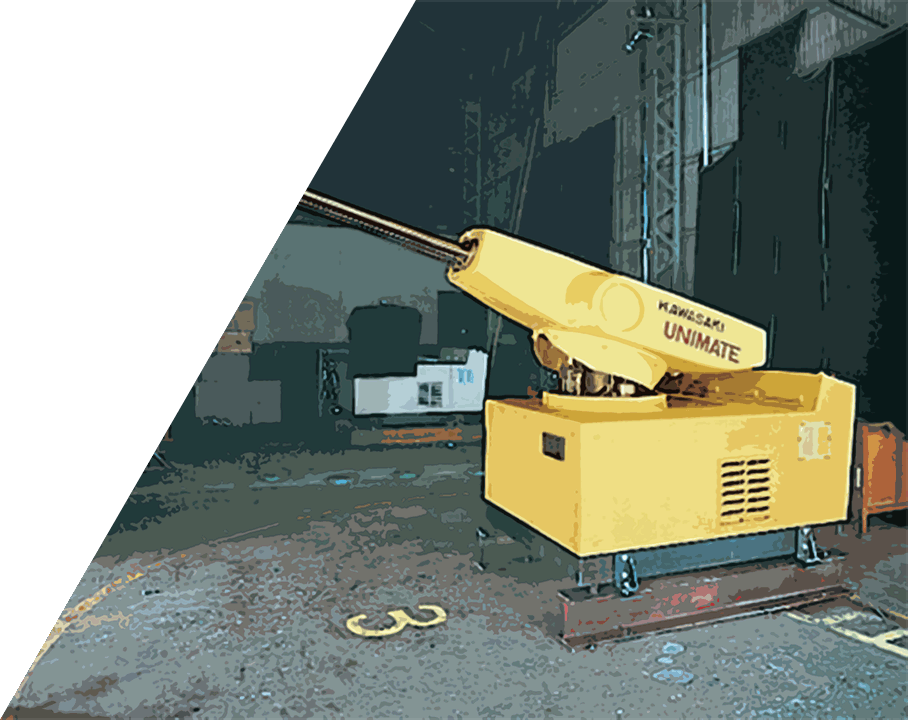
Q. What can we do to solve labor shortage in a period of high economic growth?
The Answer of Kawasaki
Develops Kawasaki-Unimate 2000, the first Japan-made industrial robot
Kawasaki regarded the development and production of labor-saving machines and systems as an important mission, and became Japan's pioneer in the industrial robot field. In 1968, the Company (Kawasaki Aircraft) entered into a technical agreement with Unimation Inc., a U.S. company specializing in industrial robots, and began development work. In 1969, the Company succeeded in developing the Kawasaki-Unimate 2000, the first industrial robot ever produced in Japan.

Q. How could we increase the joy of riding for motorcyclists?
The Answer of Kawasaki
Unveils Z1 motorcycle
In 1972, the Company unveiled Japan's largest motorcycle of the day, the Kawasaki Z1, featuring an air-cooled, 4-stroke, 4-cylinder, 903 cm3, DOHC engine, which was Kawasaki's first 4-stroke engine with a state-of-the-art, unique mechanism. Code-named "New York Steak" as early as in the development stage, the Z1 became a "mouth-watering motorcycle," winning overwhelming popularity immediately after its introduction, and becoming a long-term bestseller. The Z1, a pioneer of Supersport models, not only solidified Kawasaki's reputation in large motorcycles, but remains deeply engraved in the public conscience as one of the most superlative models to date.
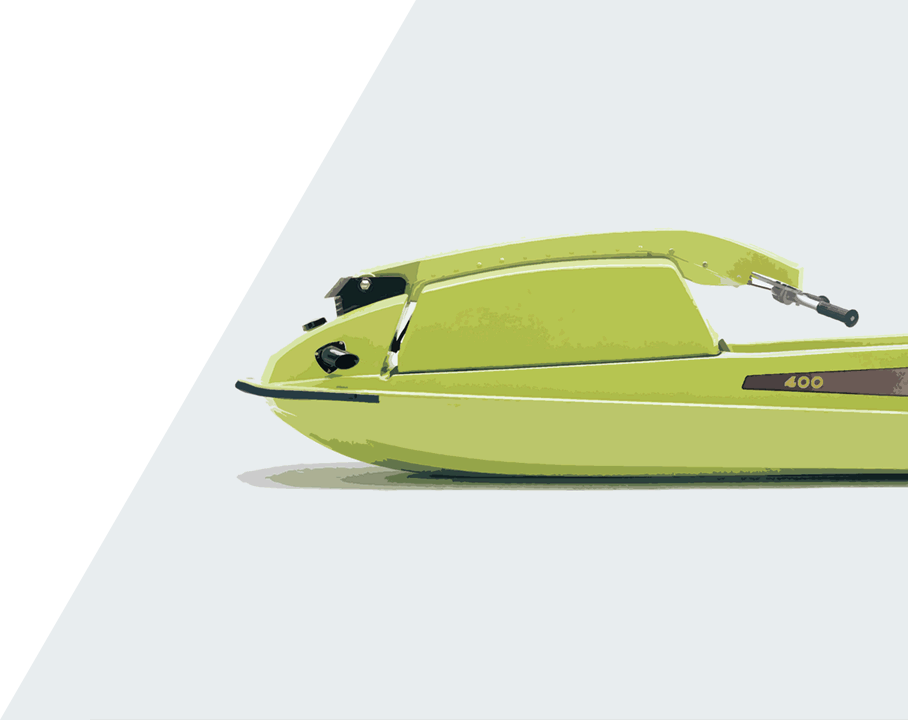
Q. Could we invent more ways to experience the thrills of marine sports?
The Answer of Kawasaki
Begins selling JET SKI® watercraft
Kawasaki sought to develop a new product powered by a gasoline engine other than motorcycles in order to expand its consumer product business. In 1971, management decided to enter the marine recreational product field and a Marine Project Team was formed at the Company. During team discussions, the concept of a new product gradually took shape. A product in a completely new category, which enables people to enjoy waterskiing, a popular marine sport of the day, by themselves, without a boat-that became the basic concept of the JET SKI® watercraft.
In 1973, at Akashi Works, Kawasaki developed a new product (product code: WSAA) by installing a 2-stroke, 2-cylinder, 398 cm3 engine designed based on those for snowmobiles. The product was named JET SKI®, and became a registered trademark of Kawasaki. After obtaining a positive response from trial sales in the U.S., the Company began mass production. In 1975, JET SKI® production was shifted to the Lincoln Plant, Nebraska, and full-scale manufacturing of the JS400 commenced. In 1980, Kawasaki started to sell JET SKI® watercraft in Japan.
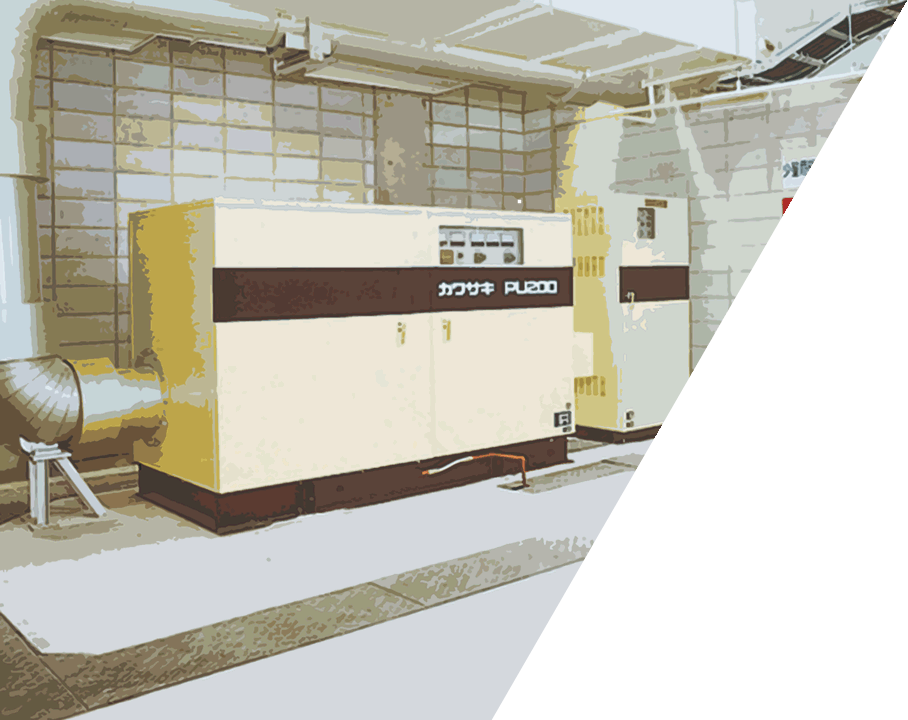
Q. How could we economize energy use within factories?
The Answer of Kawasaki
Develops GPS200 gas turbine generator
Utilizing its technology and experience in aircraft jet engines, Kawasaki pioneered Japan's gas turbine generator business. In 1972, the Company started developing industrial gas turbines based on its proprietary design. In 1976, the Kawasaki GPS200, Japan's first gas turbine generator, was produced and it attained type approval under the Fire Services Act. The next year, in 1977, the GPS200 won the Minister of Construction prize, top prize at the Electric Equipment Industry Exhibition. Kawasaki went on to expand Japan's market for gas turbine generators. The Company also developed proprietary cogeneration systems, the GPC series, in 1983.
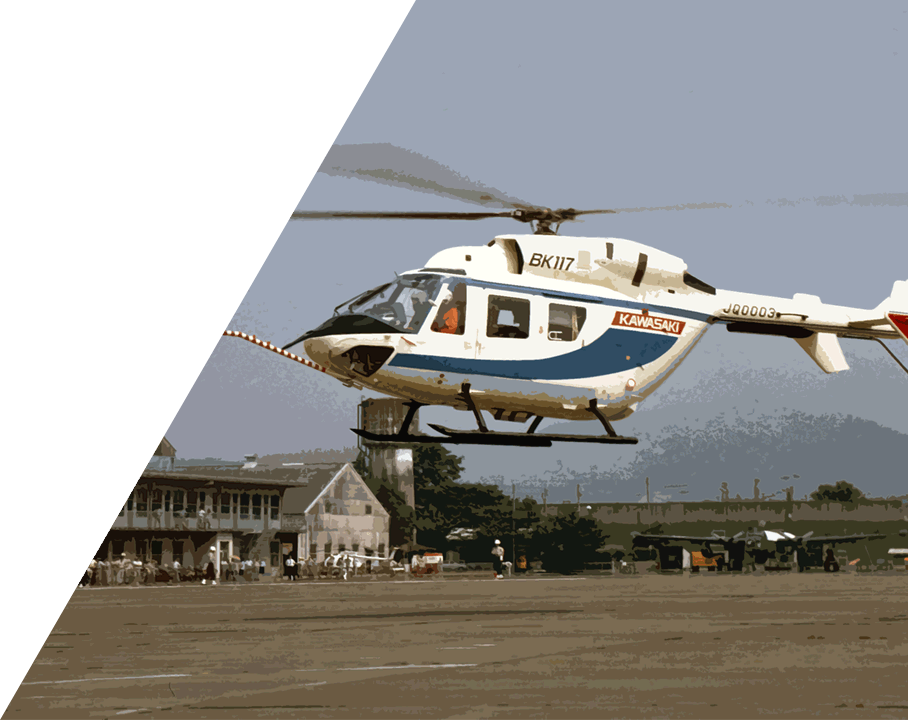
Q. Can we create a safer way to move quickly to sites of emergencies?
The Answer of Kawasaki
The BK117 helicopter's first flight
In 1977, Kawasaki started developing the BK117, a multipurpose twin-engine helicopter, with MBB (currently Eurocopter Deutschland GmbH) of Germany, and production began in 1982. The BK117, the first helicopter ever developed in Japan, offers a high standard of safety featuring twin engines, and easier operation using a jointless rotor system. Since its first delivery in 1983, the model has been improved continuously to offer excellent mobility and safety, and has contributed to society in a wide range of fields, such as patrolling, firefighting, broadcasting, and emergency medical services.
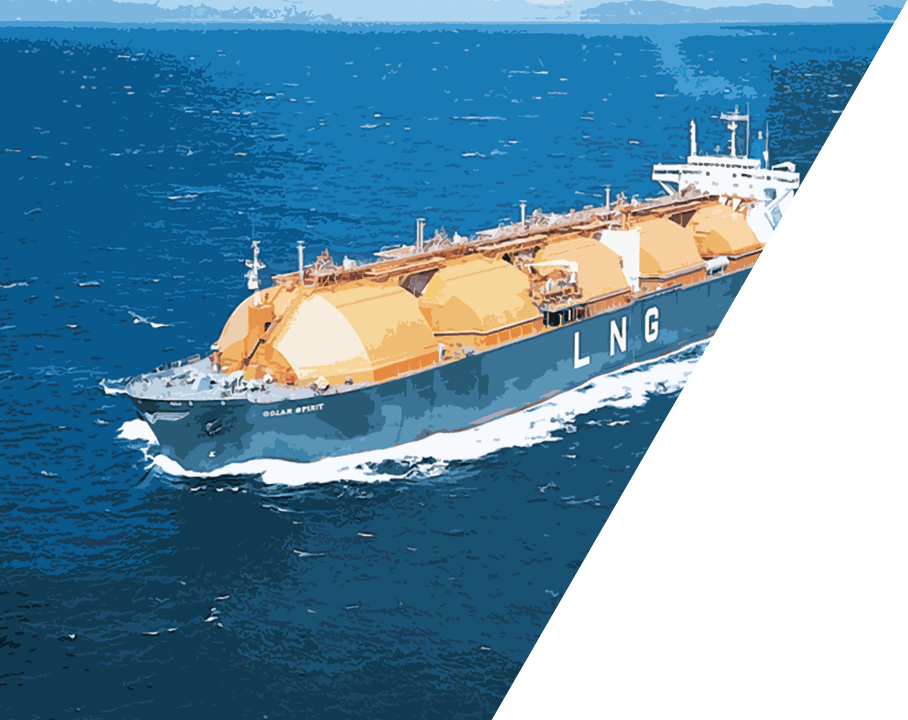
Q. How can we transport and store new types of energy?
The Answer of Kawasaki
Delivers the first LNG carrier built in Japan
Kawasaki not only aggressively pursued orders for VLCCs (very large crude-oil carriers) and other oil tankers, but also conducted R↦D activities to develop high-value-added ships. One example is its LNG (liquefied natural gas) carriers. In 1971, Kawasaki entered into a technical agreement with Moss Rosenberg Verft A.S. of Norway and accelerated the development of LNG carriers. In 1981, at the Sakaide Works, the Company delivered the Golar Spirit (129,000m3, 93,815 GT), the first LNG carrier ever built in Japan.

Q. Can we invent a subway car that handles rough conditions, and is easily cleaned and maintained?
The Answer of Kawasaki
325 subway cars delivered to New York City Transit Authority
In July of 1983, Kawasaki built the first trial car for the New York City Subway (R-62). We challenge extensive innovations and improvements, succeeded in building 325 rail cars for the New York Subway by 1985. Kawasaki was the first to use stainless steel for body, making possible for lightweight trains. Kawasaki also established a method of unstrained assembly of the car, and a system of overturning the body of the car for efficient maintenance. Introducing the tact line system, Kawasaki was able to assemble 1 car a day, which was accompanied by an efficient production management system.
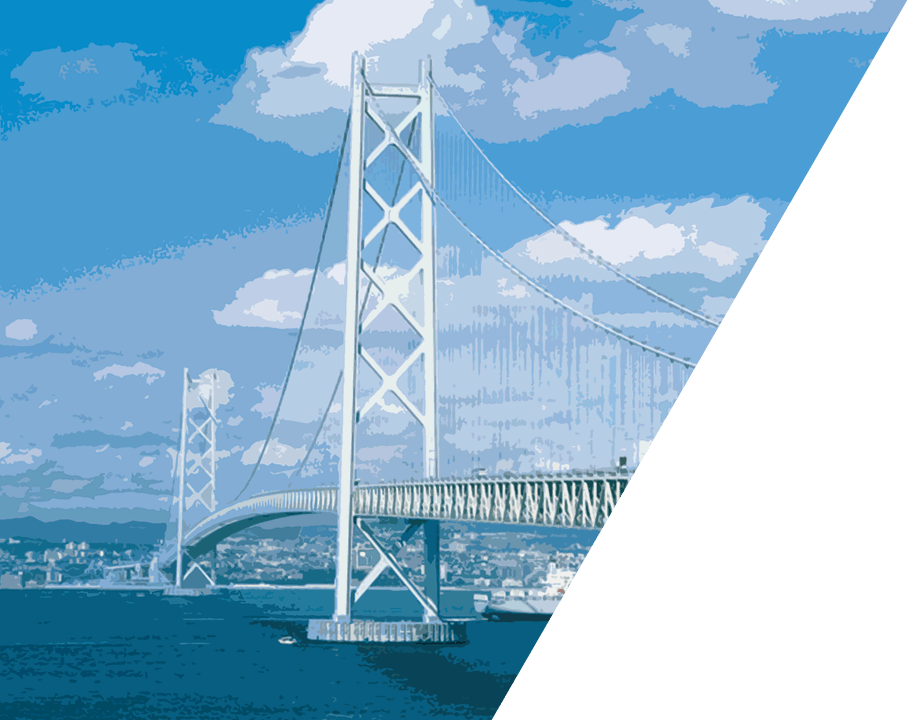
Q. Is there a way to better connect Japan’s main island, Honshu, and the smallest of the main islands, Shikoku?
The Answer of Kawasaki
Receives orders for construction work on the Akashi Kaikyo Bridge
Spanning the Strait of Akashi, the Akashi Kaikyo Bridge which connects the cities of Kobe and Awaji was the longest single span suspension bridge in the world at the time of its construction, with a total length of 3,910 meters and a distance between the two main towers of 1,990 meters. Kawasaki was the main contractor for the tower on the Awajishima Island side-283 meters tall and over 25,000 tons-which fully utilized its advanced technology for steel structures. The Company also produced and installed stiffening girders.
Following the Onaruto Bridge connecting Awaji Island and Tokushima, the Akashi Kaikyo Bridge opened in the spring of 1998, connecting Honshu and Shikoku.

Q. What is needed to finally realize the underwater tunnel connecting England and France, as first imagined by Napoleon?
The Answer of Kawasaki
Tunnel boring machines successfully complete work on the Eurotunnel
In July 1987, Kawasaki received an order for two tunnel boring machines (TBMs) with diameters of 8.17 meters for the underwater railroad for the Channel Tunnel linking Great Britain and the European continent. These machines were to excavate part of the two underwater tunnels from the coast of Sangatte in Northern France to the British coast. Due to the chalk strata on the French coast partly leaking with some faults, a sudden inflow of high-pressure water was expected during construction. In addition to these complex strata 40 meters under the sea and a high water pressure of a maximum 10 atmospheres, continual high-speed boring of 16 km at 500 m per month was also required. The difficulties become clearer when compared with the commonly accepted conditions for a TBM project: several km of boring at 200 - 300 m per month under a pressure of 1 - 2 atmospheres.
Furthermore, the leadtime from contract to design, manufacture and delivery was also set at only 13 months. However, because Kawasaki is a leading manufacturer of shield machines and TBMs, it aggressively surmounted these difficulties, supported by its expertise and track record for around 1,000 of these products. It was in June 1988 that the two machines were shipped from Kawasaki's Harima Works with more than 10,000 parts and underwent test runs.
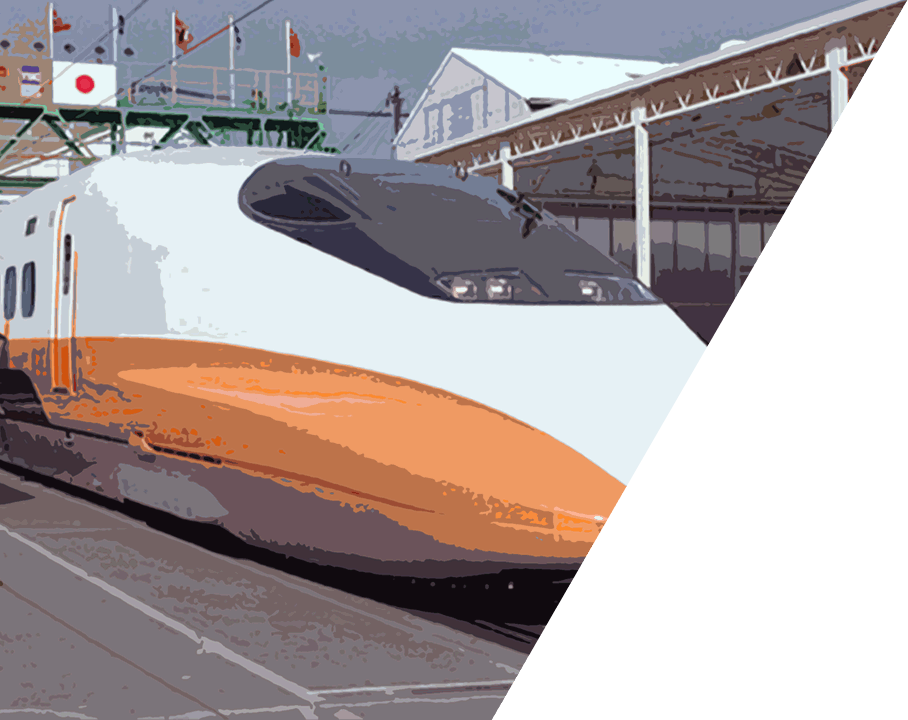
Q. Could we use the railway technologies nurtured in Japan to support the growth of Taiwan?
The Answer of Kawasaki
Ships first 700T train to Taiwan High Speed Rail
The Taiwan Shinkansen Corporation (TSC), comprising seven Japanese companies including Kawasaki, shipped the Taiwan High Speed Rail Corporation its first 12-car high-speed train. Taiwan High Speed Rail is the first overseas project to use Japan's Shinkansen technology, and the 700T-model train is the first Shinkansen train ever shipped overseas. The 700T, based on the 700-series Shinkansen train jointly developed by Central Japan Railway Company and Western Japan Railway Company, has been optimally configured for Taiwanese geography, climate, legal regulations, and so forth. It has a maximum speed of 300 km/h and will connect Taipei and Kaohsiung (345 km) in as little as 1.5 hours. While TSC has received orders beyond rolling stock for signaling systems, track, and so forth, Kawasaki was the primary contracting company for rolling stock and has manufactured 30 trains (360 cars) together with Nippon Sharyo Ltd. and Hitachi Ltd.
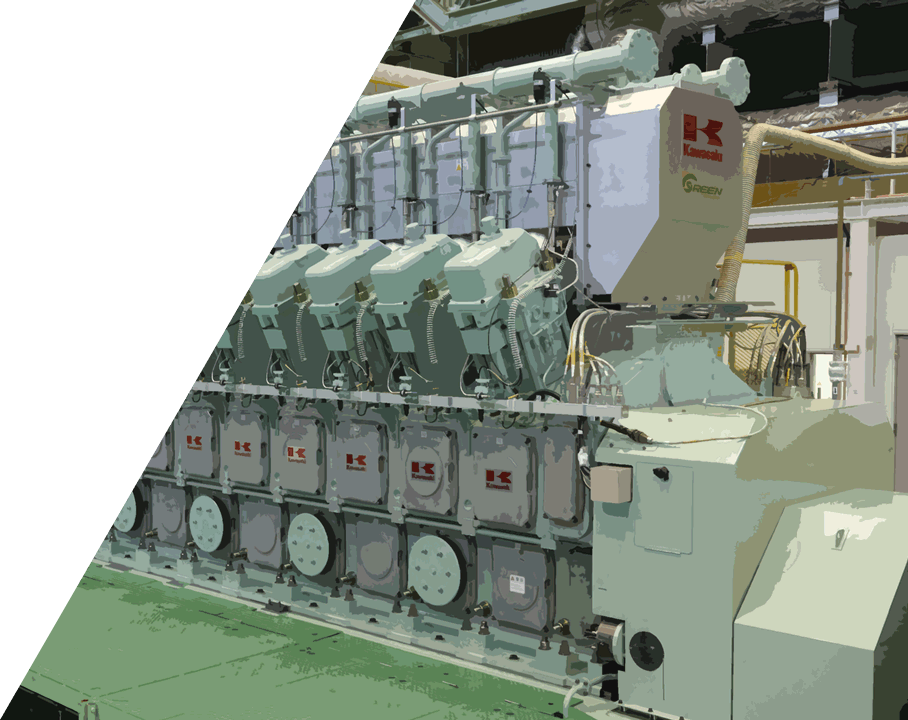
Q. How can we achieve effective use of energy and reduce environmental impact?
The Answer of Kawasaki
Kawasaki Green Gas Engine achieved world's highest 48.5% electrical efficiency
Kawasaki GREEN gas engine achieved 48.5% electric generation efficiency and demonstrated excellent environmental performance with extremely low NOx emissions of 160 ppm at 0% O2 during test runs in combination with a power generator that began.
The engine features an optimized combustion chamber form and individual control of each cylinder to improve anti-knocking performance and cycle efficiency. The addition of a prechamber spark ignition system does away with the need for additional liquid fuel for ignition and realizes easy operations. Kawasaki’s fluid dynamics technology was employed in developing the prechamber to ensure stable combustion.
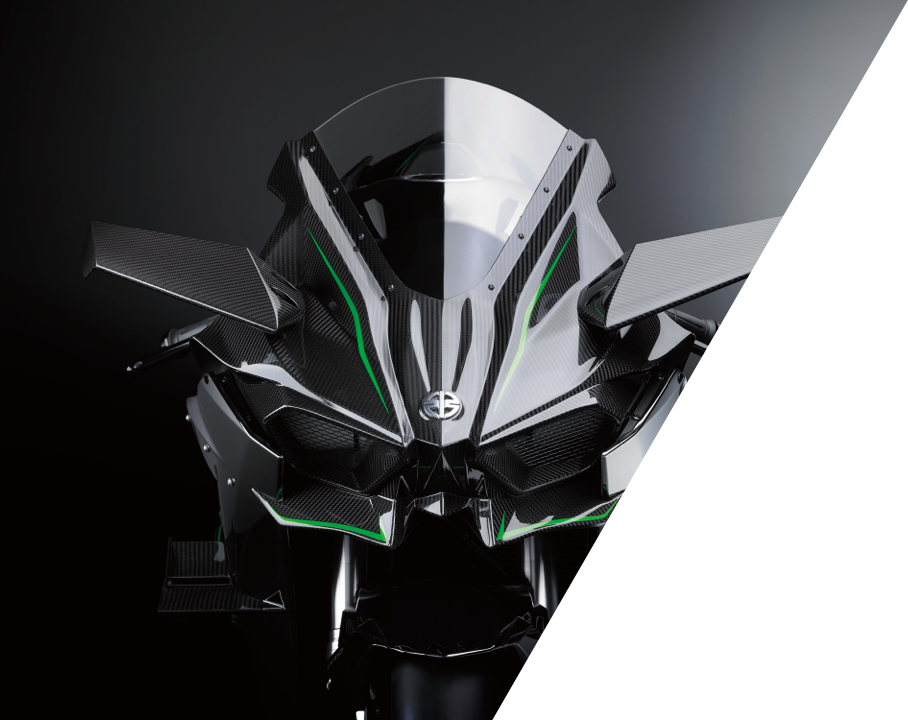
Q. Can we create motorcycles that are even faster and easier to navigate?
The Answer of Kawasaki
Maximum speed exceeds 300 km/h. Ninja H2 and H2R launched
In 2015, Kawasaki launched the Ninja H2 and the Ninja H2R, high-performance sports models that represents the sum of Kawasaki technologies.
"The Ninja H2 and H2R are the first mass-produced large motorcycles in the world to use the fully in-house designed 998cm3 in-line four-cylinder engine equipped with a mechanical centrifugal supercharger, which delivers unprecedented acceleration and outstanding running stability.
Gas turbine technology was utilized in the development of the supercharger. For the body design, aerodynamic control technology from aircrafts was used to improve stability at high speeds, and gas engine technology was applied to suppress knocking. The company’s latest technology is utilized in every aspect of this model.
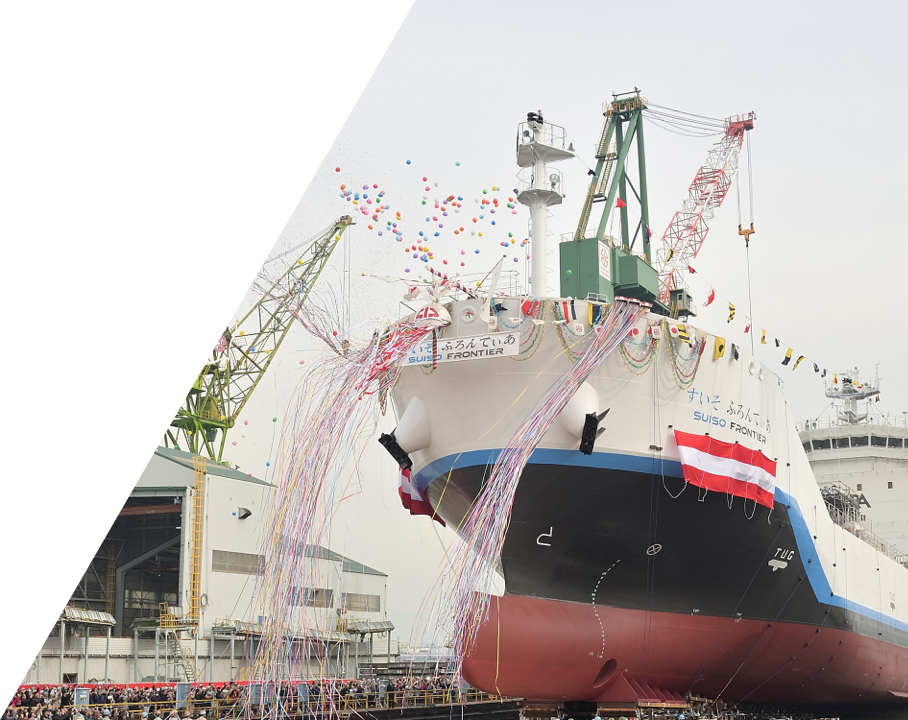
Q. What is needed to ensure our next generation’s energy supply chain?
The Answer of Kawasaki
World's First Liquefied Hydrogen Carrier SUISO FRONTIER Launches
Hydrogen is gaining popularity as a key next-generation energy source to combat global warming. It does not emit CO2 or other greenhouse gases during use, and expected applications include power generation, fuel cell vehicles and more.
The world’s first liquefied hydrogen carrier, “SUISO FRONTIER” that carries such energy source, was launched in Kobe in 2019.
This vessel is equipped with a cargo tank which was developed to provide a means of transporting liquefied hydrogen at 1/800 of its original gas-state volume, cooled to –253°C, safely and in large quantities over long distances by sea.
This next-generation energy carrier was made possible by combining the LNG carrier construction and on-shore LNG storage tank construction technologies which the company has cultivated over the years.
The “SUISO FRONTIER” will be deployed in an international hydrogen supply chain technology demonstration test to transport liquefied hydrogen produced in Australia to Japan, with the aim of realizing a society where hydrogen is used in the same was as gasoline and natural gas is today.
*Implemented as ”HySTRA” the CO2-free Hydrogen Energy Supply-chain Technology Research Association with the support of New Energy and Industrial Technology Development Organization

Q. How can we alleviate the heavy burden on doctors, and ensure that there are no regional disparities in medical care?
The Answer of Kawasaki
Developing Japan’s first robotic assisted surgery system “hinotoriTM Surgical Robot System”
Medicaroid, which was formed as a joint venture by Kawasaki and Sysmex Corporation received regulatory approval from the Japanese Ministry for the hinotoriTM Surgical Robot System in 2020.
In recent years, along with the progress of minimally invasive surgery that reduces the burden on the patient, there is a growing need for robotic surgery.
The hinotoriTM supporting smooth surgery consists of three components, the Surgeon Cockpit, Operation Unit, and Vision Unit. Arms of the Operation Unit are designed to be as compact as human arms. The Surgeon Cockpit adopts ergonomic design to fit the postures of surgeons during surgeries. The Vision Unit provides high-definition 3D images on the stereoscopic viewer of the Surgeon Cockpit.
Inheriting the DNA of Kawasaki robots which has a track record of more than 50 years since manufacturing the first domestically produced industrial robot, the hinotoriTM offers excellent support for healthcare professionals at the forefront of medical practice to achieve quality in medicine between patients all over the world.
Leveraging solutions we have created in the past, we will continue providing trustworthy answers to move us into the next society.
We, Kawasaki, have introduced numerous products and solutions over our 120-year history. Our history reflects the constantly-shifting societal issues that we have continued to face head on.
We will leverage the know-how we have developed over the years, and continue working towards solving new issues.
What does a remote society, in which every individual feels safe, look like?
What should mobility look like in the near future?
What solutions can alleviate issues surrounding energy and its environmental impact?
We, Kawasaki, will move one step ahead, transforming ourselves in order to create the answers that are needed by society.


